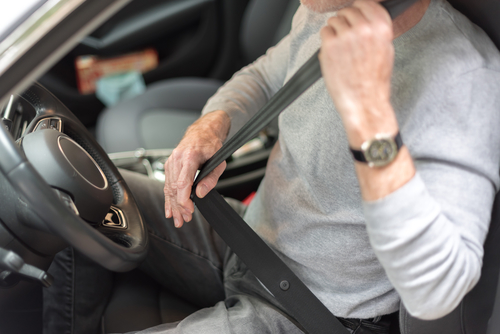The facts are different than you may think
Click It or Ticket isn’t about citations; it’s about saving lives. In 2016, there were 10,428 unbuckled passenger vehicle occupants killed in crashes in the United States. These fatalities happen despite several myths held by people who might believe they’re above the law.

From May 21 to June 3, to help prevent crash fatalities, state and local law enforcement agencies are stepping up enforcement and cracking down on those who don’t wear their seat belts
Five Seatbelt Myths Busted:
- Vehicle type: There seems to be a misconception among those who drive and ride in pickup trucks that their large vehicles will protect them better than other vehicles would in a crash. The numbers say otherwise: 61 percent of pickup truck occupants who were killed in 2016 were not buckled up. That’s compared to 42 percent of passenger car occupants who were not wearing seat belts when they were killed. Regardless of vehicle type, seat belt use is the single most effective way to stay alive in a crash.
- Seating position: Too many people wrongly believe they are safe in the back seat unrestrained. Forty-seven percent of all front-seat passenger vehicle occupants killed in crashes in 2016 were unrestrained, but 57 percent of those killed in back seats were unrestrained.
- Rural versus urban locations: People who live in rural areas might believe that their crash exposure is lower, but in 2016, there were 13,732 passenger vehicle fatalities in rural locations, compared to 9,366 fatalities in urban locations. Out of those fatalities, 49 percent of those killed in the rural locations were not wearing their seat belts, compared to 46 percent in urban locations.
- Day versus night: High-visibility seat belt enforcement is important 24 hours a day, but nighttime is especially deadly for unbuckled occupants. In 2016, 56 percent of passenger vehicle occupants killed at night (6 p.m. – 5:59 a.m.) were not wearing their seat belts.
- Man versus woman: Men make up the majority of those killed in motor vehicle traffic crashes. In 2016, 65 percent of the 23,714 passenger vehicle occupants who were killed were men. It comes as no surprise that men wear their seat belts at a lower rate than women do – 52 percent of men in fatal crashes were unrestrained, compared to 40 percent of women.
Seat belt use is required by law for a reason: In 2016, seat belts saved an estimated 14,668 lives of occupants 5 and older. From 2012 to 2016, seat belts saved nearly 67,000 lives. If all passenger vehicle occupants 5 and older involved in fatal crashes had worn their seat belts, an additional 2,456 lives could have been saved in 2016 alone. Buckle up and save yourself and those you love!
Learn more about the Click It or Ticket mobilization at www.nhtsa.gov/ciot.
Source: National Highway Traffic Safety Administration (NHTSA)


